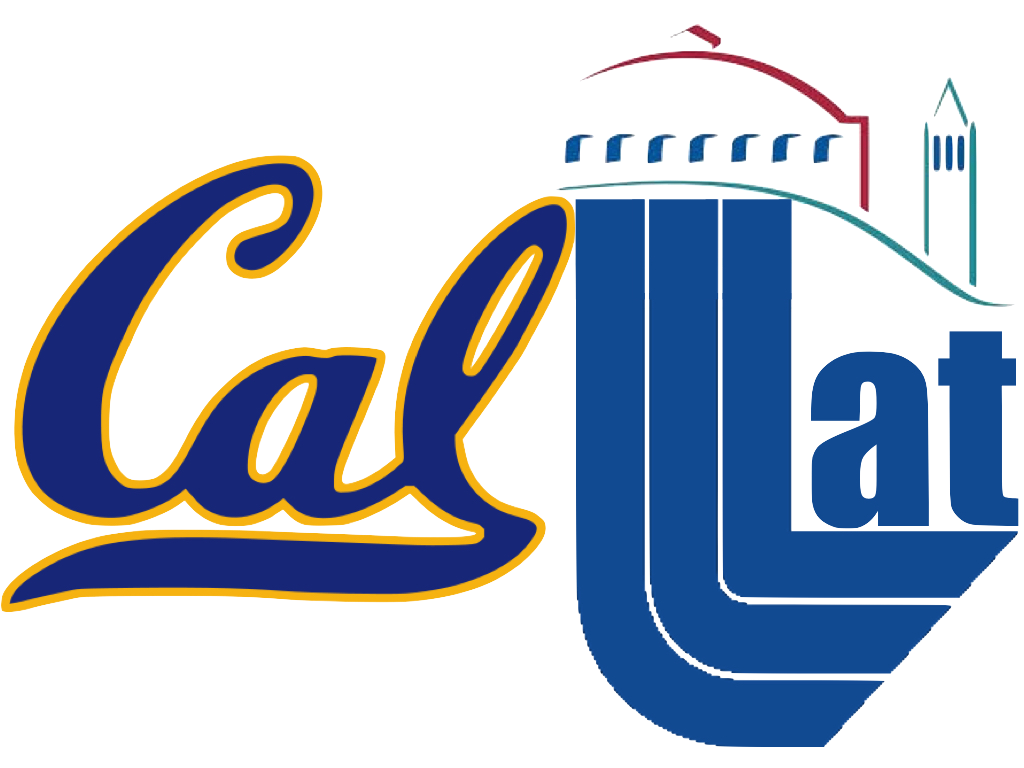This project performs the chiral, continuum, infinite volume extrapolation of the gA values computed with MDWF on HISQ lattice action, as described in Nature 558, 91–94 (2018) or arXiv:1805.12130. To perform the extrapolation, we have created a Jupyter notebook and an accompanying Python library:
ga_workbook.ipynb: Jupyter notebook for chiral-continuum extrapolation analysis used in the final analysiscallat_ga_lib: Library for extrapolation- correlator data formatting for
lsqfit - fit function definitions
- systematic error breakdown definitions
- matplotlib routines
The bootstrap results of our correlation function analysis are contained in the
datafolder along with other input parameters from the HISQ ensembles needed in the analysis:
- correlator data formatting for
data: Directory of datagithub_ga_v2.csv: Bootstrapped correlation function analysis results in csv format- Correlator data is made easily accessible from Jupyter with
pandasand summarized in a dataframe
- Correlator data is made easily accessible from Jupyter with
hisq_params.csv: a/w0 and αs for HISQ ensembles used for this work in csv format- HISQ parameters are displayed in
pandasdataframe
- HISQ parameters are displayed in
In addition, the raw correlation functions computed for this project are included in correlation_functions:
correlation_functions: Directory of datacallat_gA.h5We provide a sample correlation function fitter that performs the same analysis performed for our project insample_corr_fit. This sample fitter usesiminuitv1.1.1 (our main analysis was performed withlsqfit):
sample_corr_fitfh_fit.py: main library for performing fitga_sample_corr_fitter.ipynb: Jupyter notebook that uses the libraryfit_params.py: an input file generated through our Bayes constrained fit to pre-condition the frequentist least squares minimization.
Run on Binder
You can run the
If you want to run the example correlator fitter notebook instead, you can click here.
Download Anaconda and follow installation instructions.
conda create --name pyqcd3 python=3 anaconda
source activate pyqcd3Key libraries from gplepage GitHub.
Exit conda environment with
source deactivatejupyter notebook ga_workbook.ipynbpython version: 3.6.1 |Anaconda 4.4.0 (x86_64)| (default, May 11 2017, 13:04:09)
[GCC 4.2.1 Compatible Apple LLVM 6.0 (clang-600.0.57)]
pandas version: 0.20.1
numpy version: 1.12.1
scipy version: 0.19.0
mpl version: 2.0.2
lsqfit version: 9.1.3
gvar version: 8.3.2
and
python version: 2.7.13 (default, Jul 29 2017, 11:08:07)
[GCC 4.2.1 Compatible Apple LLVM 8.1.0 (clang-802.0.42)]
pandas version: 0.20.3
numpy version: 1.13.1
scipy version: 0.19.0
mpl version: 2.0.2
lsqfit version: 9.1.3
gvar version: 8.2.2
python version: 3.6.1 |Anaconda 4.4.0 (x86_64)| (default, May 11 2017, 13:04:09)
[GCC 4.2.1 Compatible Apple LLVM 6.0 (clang-600.0.57)]
numpy version: 1.12.1
scipy version: 0.19.0
mpl version: 2.0.2
iminuit version: 1.1.1
python version: 2.7.14 (default, Sep 25 2017, 09:53:22)
[GCC 4.2.1 Compatible Apple LLVM 9.0.0 (clang-900.0.37)]
numpy version: 1.14.2
scipy version: 1.0.1
mpl version: 2.0.2
iminuit version: 1.1.1
project_gA Copyright (c) 2018, The Regents of the University of California (UC), through Lawrence Berkeley National Laboratory, and the UC Berkeley campus (subject to receipt of any required approvals from the U.S. Dept. of Energy). All rights reserved.
If you have questions about your rights to use or distribute this software, please contact Berkeley Lab's Innovation & Partnerships Office at IPO@lbl.gov.
NOTICE. This Software was developed under funding from the U.S. Department of Energy and the U.S. Government consequently retains certain rights. As such, the U.S. Government has been granted for itself and others acting on its behalf a paid-up, nonexclusive, irrevocable, worldwide license in the Software to reproduce, distribute copies to the public, prepare derivative works, and perform publicly and display publicly, and to permit other to do so.
 |
 |
 |
 |
 |
